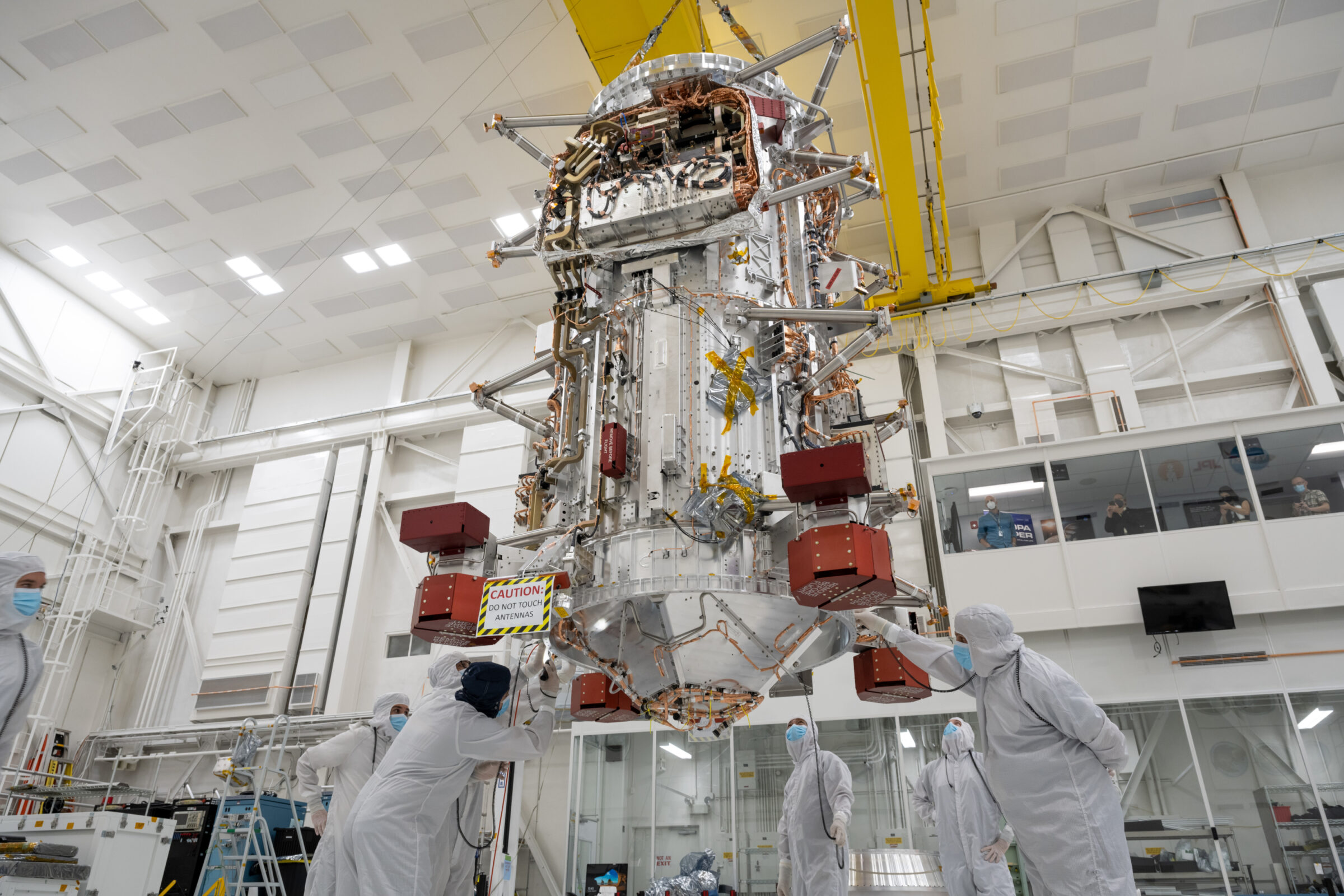The Downlink • Nov 22, 2024
Gazing off into space
Space Snapshot

While winter may bring colder temperatures to the Northern Hemisphere, it also brings longer nights — which means more time for stargazing! Our latest article introduces some helpful tips for finding planets, stars, and constellations. And if you want to learn even more, our new Stargazing 101 course can teach you all about appreciating the Cosmos from our vantage point on Earth. Planetary Society members can find the course in our online member community. The course author, Science Editor Asa Stahl, will also join members in the community for a Q&A about the course on Nov. 26. If you aren’t yet a member, join today! Image credit: ESO/Luis Calçada/Herbert Zodet.
Fact Worth Sharing

Light pollution makes it hard to enjoy the night sky, but people around the world are working to keep the stars, planets, and galaxy visible. There are now protected dark sky sites in 22 countries, over more than 160,000 square kilometers (63,000 square miles) in total.
Mission Briefings


NASA’s next space telescope is getting ready to do its own stargazing. With the recent completion and delivery of the optical telescope assembly, all components of the Nancy Grace Roman Space Telescope are now finished. The dark energy, exoplanets, and infrared astrophysics mission is on schedule to launch by May 2027. Pictured: The telescope’s 2.4-meter (7.9-foot) primary mirror. Image credit: NASA/Chris Gunn.

A persistent leak is plaguing a Russian component of the ISS. A crack in the International Space Station’s Zvezda service module has been causing a “small but persistent” leak for several years now. Russian and American technical teams reportedly disagree about the cause and severity of the problem, with NASA concerned that it could cause a catastrophic failure in that part of the module.

China is developing plans for a mission to the lunar south pole region. The Chang'e 8 lunar mission, planned to launch in 2028, would send a lander and two rovers to an area near the Moon’s south pole. The mission will study the area and potentially test a 3D-printing technique to make a brick out of lunar regolith. Intriguingly, the mission may include a humanoid robot, though details about this aspect of the mission are lacking.
All in for space advocacy!

This week, The Planetary Society has a lot of advocacy-related news.
First, we are excited to announce that early bird registration is now open for our 2025 Day of Action. This annual event brings Planetary Society members from across the United States to Washington, D.C., to meet with their representatives in Congress and advocate for space. Learn more about the event and register today.
We are also thrilled to announce that our Director of Government Relations, Jack Kiraly, was recently named one of the Advocacy Association’s “Top 20 in 2024.” This award honors advocates in various fields who show “tenacity, creativity, and grit” in their efforts to make the world a better place.
Jack joined our Chief of Space Policy, Casey Dreier, this week to speak with Planetary Society members about the impact of the recent U.S. presidential election in a virtual Q&A. If you missed it, you can watch the recording on our website. To learn more about how a Trump presidency might shape U.S. space policy, listen to the latest episode of Planetary Radio, which explores the topic in depth.
From The Planetary Society


Announcing our 2024 space gift guide! With the gift-giving season fast approaching, we’ve put together a collection of some of our favorite space-themed gift ideas. From toys and games to clothing and decor and more, our gift guide offers a wide variety of gifts at a range of costs — including some that don’t cost a thing! Pictured: An ornament replica of the Voyager Golden Record. Image credit: Interstellar Systems.

The Best of 2024 campaign is almost over — have you voted yet? It’s not too late to cast your vote for the best pictures, discoveries, missions, and more from the last year in space exploration. Voting is open until the end of November, and we’ll announce the results in early December.
What's Up

In the early evening, look for super bright Venus in the west and Saturn high in the east. Jupiter will be lower in the eastern sky, rising higher over the course of the night followed by reddish Mars. Both will be in a region of the sky with several of the brightest stars and most recognizable constellations including Orion, Gemini, and Taurus. Learn more at planetary.org/night-sky.
Help save space missions. Join today!

If you are not already a member, we need your help. NASA is at a crossroads, and your support is needed today! Funding for space science and exploration is not guaranteed. It requires the voice of passionate advocates like you.
NASA is facing major budget cuts for the first time in a decade, and thousands of skilled scientists, engineers, and technicians have already been laid off at NASA centers across the US. NASA funding must grow, not shrink, if the agency is to succeed in returning to the Moon, exploring the Solar System, and seeking out life beyond Earth.
We must prevent future budget cuts. When you become a member of The Planetary Society, you join the world’s largest and most influential space advocacy nonprofit. Will you join us and enable the future of space exploration?
Wow of the Week

An interest in stargazing can evolve into a passion for astrophotography. Planetary Society member John Kincinas captured this image of the “Soul Nebula,” a cluster of stars surrounded by a cloud of dust and gas over 150 light-years across and located about 6,500 light-years away in the constellation Cassiopeia. “I propose to rename this the 'Buffalo' nebula,” John joked in the member community where he shared his work, noting the structure’s resemblance to the great plains animal. John captured these stunning colors and details by collecting light through his telescope in broadband and narrowband filters over two nights. Image credit: John Kincinas.
Send us your artwork!
We love to feature space artwork in the Downlink. If you create any kind of space-related art, we invite you to send it to us by replying to any Downlink email or writing to [email protected]. Please let us know in your email if you’re a Planetary Society member!


 Explore Worlds
Explore Worlds Find Life
Find Life Defend Earth
Defend Earth

